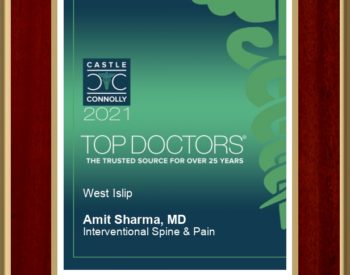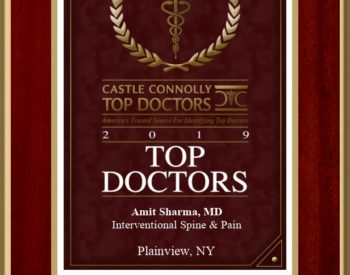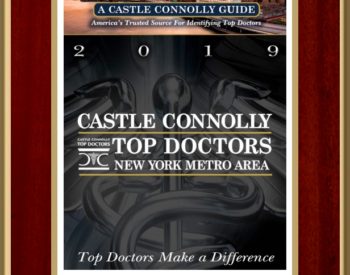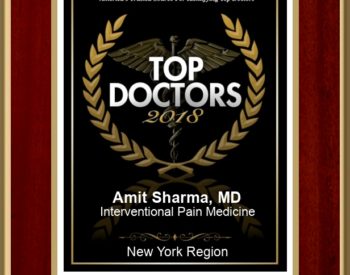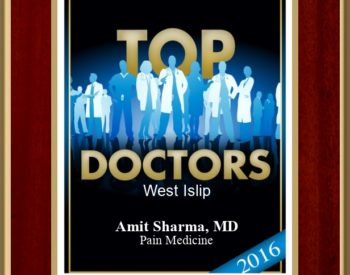Spine Doctor in Commack
Welcome to the home of your local Spine Doctor in Commack, where we prioritize your spinal health and well-being. Our experienced and dedicated spine specialists are committed to administering personalized care and comprehensive treatment options for various spine-related conditions. Whether you’re dealing with back pain, spinal injuries, or neurological disorders affecting the spine, we’re here to assist you in regaining mobility, alleviate discomfort, and improve your quality of life. With a focus on advanced techniques and quality care, we strive to be your dedicated partner in spinal health. Discover our services and learn more about how we can assist you on your journey to a healthier spine.
Which Doctor is best for Spine?
The best spine doctor in Commack for spine-related issues is a decision that you, as an individual, can make based on multiple aspects such as the precise circumstances, the severity of the problem, and your personal preferences. Some examples of physicians generally applied in spine care:
- Orthopedic Spine Surgeons specialize in surgical interventions for spine disorders such as herniated discs, spinal fractures, and spinal deformities.
- Neurosurgeon: Neurosurgeons also perform spine surgeries, especially for conditions involving the nervous system, such as spinal cord tumors or nerve compression.
- Physiatrist (Physical Medicine and Rehabilitation Physician): Physiatrists focus on non-surgical treatments for spine conditions, including pain management, physical therapy, and rehabilitation.
- Pain Management Specialist: These doctors specialize in managing chronic pain, including spine-related pain, through various interventions such as medication, injections, and therapies.
- Chiropractor: Chiropractors use manual techniques to adjust the spine and treat musculoskeletal issues that may contribute to spine pain and dysfunction.
The best doctor for you will depend on the specific nature of your spine condition, your medical history, and your preferences for treatment. It’s reassuring to know that a collaborative approach is often taken, starting with a primary care physician who can evaluate your symptoms and refer you to the appropriate specialist if needed.
What is the difference between a spine doctor in Commack and an orthopedic doctor?
A “spine doctor” typically refers to a medical professional specializing in diagnosing and treating conditions explicitly related to the spine. Examples include orthopedic surgeons who focus on spinal surgeries, neurosurgeons who perform spine surgeries related to neurological conditions, physiatrists who provide non-surgical treatments for spine disorders, and other specialists like pain management physicians and chiropractors who also deal with spine-related issues.
On the other hand, an “orthopedic doctor” is a broader term that encompasses medical professionals specializing in the musculoskeletal structure, including bones, joints, muscles, ligaments, and tendons. Orthopedic doctors may focus on various areas such as joint replacement surgery, sports medicine, trauma surgery, and spine surgery. Some orthopedic surgeons choose to specialize exclusively in spine surgery, making them spine specialists within the field of orthopedics.
In summary, while spine and orthopedic doctors can be involved in treating spine-related conditions, the term “spine doctor” may refer specifically to specialists who focus solely on spinal health. In contrast, “orthopedic doctor” encompasses a broader range of musculoskeletal conditions and treatments, including spine care.
What is a Dr of the spine called?
A spine doctor in Commack specializing in diagnosing and treating spinal disorders is typically referred to as an “Orthopedic Spine Surgeon” or a “Neurosurgeon specializing in Spine Surgery.” These doctors have exclusive training and expertise in managing disorders affecting the spine, such as herniated discs, spinal fractures, spinal deformities, spinal cord injuries, and other neurological disorders related to the spine.
Orthopedic Spine Surgeons are orthopedic surgeons who have undergone additional fellowship training specifically focused on spine surgery. They are skilled in both non-surgical treatments, such as physical therapy and pain management, and surgical interventions for complex spine conditions.
Neurosurgeons specializing in spine surgery have pursued specialized training in spine surgery. They are adept at treating conditions that involve the nervous system and often collaborate with orthopedic spine surgeons to provide comprehensive care for patients with spine-related issues.
Both types of doctors can diagnose spine problems, recommend appropriate treatments, and perform surgical procedures when necessary to address spine disorders.
What type of Spine doctor in Commack is best for spine surgery?
Choosing the best type of spine doctor in Commack for spine surgery depends on several circumstances, including the specific condition being treated, the patient’s medical history, and individual preferences. Here are the types of doctors commonly involved in spine surgery:
- Orthopedic Spine surgeons specialize in surgical interventions for spine disorders related to the musculoskeletal system, such as spinal deformities, herniated discs, fractures, and degenerative spine conditions.
- Neurosurgeon specializing in Spine Surgery: Neurosurgeons who focus on spine surgery are experts in treating spine conditions involving the nervous system, such as spinal cord tumors, nerve compression, and other neurological disorders affecting the spine.
- Orthopedic Surgeon: Some general orthopedic surgeons also perform spine surgeries, especially those related to traumatic spine injuries or simple spinal procedures.
- Complex Spine Surgeon: These specialists have additional training and experience in managing complex spine disorders, including deformities, revision surgeries, and challenging cases that require advanced surgical techniques.
When determining the best type of doctor for spine surgery, it’s essential to consider the surgeon’s expertise, experience, outcomes, and the specific nature of the spine condition. A thorough consultation with a spine specialist can help determine each case’s most appropriate surgical approach and treatment plan.
Interventional Spine Surgery and Pain Management
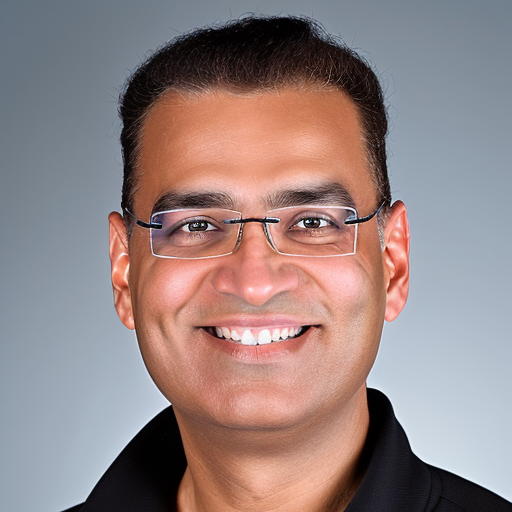
- Board Certified in Interventional Spine Surgery & Pain Management
- Castle Connolly Regional Top Doctor: 2016-2023
- Top Doctors New York Metro Area: 2016-2023
-
New York Magazine Top Doctors: 2017-2023
-
Newsday Top Doctors on Long Island: 2016-2023
-
Completed residency from Columbia University in New York City and fellowship training in Interventional Pain from Johns Hopkins University
- Assistant professor at Columbia University (2007-09)
- Founder of SpinePain Solutions
- Chief, Division of Pain Management at Good Samaritan Hospital Medical Center
Dr. Amit Sharma is a board certified physician who specializes in interventional pain management. He is the Chief of the Division of Pain Management at Good Samaritan University Hospital. He is the founder and Director of Interventional Spine & Pain at SpinePain Solutions and Medical Director at Minimally Invasive Center of New York.
Recognized by his peers for his skills, commitment, and an outstanding professional path; Dr. Sharma has been honored by Castle Connolly, New York Magazine and Newsday as one of the Top Doctors in the US for Pain Management for the last several years. He has simultaneously received “Patients Choice Awards” and “Compassionate Doctor Award” for many years. He is a lifetime member of American Society of Interventional Pain Physicians and a member of numerous national and international pain societies.
Dr. Sharma did his residency in anesthesiology at The College of Physicians & Surgeons of Columbia University in New York City. On completion, he was rewarded as the best resident of the year. He then obtained fellowship training in interventional pain medicine at Johns Hopkins School of Medicine. He was honored with Pfizer best fellow of the year by Johns Hopkins. Dr. Sharma served as an Assistant Professor at Columbia University prior to going in private practice.
Having performed over 25,000 interventional procedures, Dr. Sharma specializes in the diagnosis and management of back and neck problems, along with neuropathic and cancer pain. He also has special interest in ischemic pain and peripheral vascular disease related issues. He has an expertise in neuromodulation (spinal cord stimulation), intrathecal drug delivery systems, minimally invasive spine procedures (Kyphoplasty, Intradiscal Electrothermy, Nucleoplasty, MILD, Intracept, Endoscopic Discectomy and Rhizotomy) and radiofrequency ablative procedures. Along with the other physicians at SpineCare Long Island, he is a strong proponent of non-operative options such as physical therapy, chiropractic manipulations and acupuncture.
Dr. Sharma is well published in peer-reviewed journals and has authored numerous textbook chapters. He has been invited as a guest speaker at several national pain meetings. He has also done research in the field of Complex Regional Pain Syndrome (CRPS or RSD). His team at Johns Hopkins was provided a financial grant to conduct the largest study on CRPS patients which was published in a renowned journal. Having served as a teaching faculty, training residents and fellow spine doctors in Commack, Dr. Sharma carries the passion of education with him. He believes in educating patients and spends time explaining every aspect of their treatment plan with them.
Publications (In Peer Review Literature)
- Gharibo C, Sharma A, Soin A, Shah S, Diwan S, Buenaventura R, Nampiaparampil DE, Aydin S, Bakshi S, Abdi S, Jha SS, Cordner H, Kaye AD, Abd-Elsayed A, Candido KD, Knezevic NN, Atluri S, Wargo BW, Sanapati MR, Datta S, Hirsch JA, Manchikanti L, Rajput K. Triaging Interventional Pain Procedures During COVID-19 or Related Elective Surgery Restrictions: Evidence-Informed Guidance from the American Society of Interventional Pain Physicians (ASIPP). Pain Physician. 2020 Aug;23(4S):S183-204. PMID: 32942785.
- Sharma A, Agarwal S, Broatch JW, Raja SN. A Web Based Epidemiological Survey of Complex Regional Pain Syndrome. Reg Anesth Pain Med. 2009 Mar-Apr; 34(2):110-5.
- Sharma A, Williams K, Raja SN. Advances in treatment of complex regional pain syndrome: recent insights on a perplexing disease. Curr Opin Anaesthesiol. 2006 Oct;19(5):566-572.
- Sharma A, Pagel PS, Bhatia A. Intraoperative iatrogenic acute pericardial tamponade: use of rescue transesophageal echocardiography in a patient undergoing orthotopic liver transplantation. J Cardiothorac Vasc Anesth. 2005 Jun;19(3):364-6.
- Jooste EH, Sharma A, Zhang Y, Emala CW. Rapacuronium Augments Acetylcholineinduced Bronchoconstriction via Positive Allosteric Interactions at the M3 Muscarinic Receptor. Anesthesiology. 2005 Dec;103(6):1195-1203.
- Christo PJ, Hobelman JG, Sharma A. Aging and the Neurobiology of Addiction. J Geriatrics & Aging, 2005 Nov/Dec;8(10):48-52.
Editorial Experience
- Section Editor (Acute and Chronic Pain): Marcucci: Avoiding Common Anesthesia Errors, Catherine Marcucci, Norman A. Cohen, David G. Metro, Jeffery R. Kirsch (Eds), Lippincott Williams & Wilkins, 2008.
- Referee, Cochrane Pain, Palliative & Supportive Care (PaPaS) Review Group (2007 – Present).
Textbook Chapters
- Sharma A, Raja SN. Assessment and Management of Chronic Pain and Palliative Care. In: Geriatric Anesthesia, Fredirick E. Sieber (Ed.). The McGraw-Hill Companies, Inc., 2007. PP 319-336.
- Sharma A. The basal infusion mode in patient controlled analgesia is both friend and foe, In: Marcucci: Avoiding Common Anesthesia Errors, Catherine Marcucci, Norman A. Cohen, David G. Metro, Jeffery R. Kirsch (Eds), Lippincott Williams & Wilkins, 2008. PP 725-30.
- Sharma A. Rule out facet arthropathy before initiating expensive and invasive maneuvers for back and spine pain, In: Marcucci: Avoiding Common Anesthesia Errors, Catherine Marcucci, Norman A. Cohen, David G. Metro, Jeffery R. Kirsch (Eds), Lippincott Williams & Wilkins, 2008. PP 741-47.
- Sharma A. Do not guess at the equivalent dose when determining an opioid conversion, In: Marcucci: Avoiding Common Anesthesia Errors, Catherine Marcucci, Norman A. Cohen, David G. Metro, Jeffery R. Kirsch (Eds), Lippincott Williams & Wilkins, 2008. PP 712-19.
- Sharma A. Management of perioperative pain in opioid dependent patient – Out of the frying pan, into the fire, In: Marcucci: Avoiding Common Anesthesia Errors, Catherine Marcucci, Norman A. Cohen, David G. Metro, Jeffery R. Kirsch (Eds), Lippincott Williams & Wilkins, 2008. PP 732-35.
- Sharma A., Kathuria SS. Anesthesia for eye surgery – The innate culture of “1-N-1”, In: Marcucci: Avoiding Common Anesthesia Errors, Catherine Marcucci, Norman A. Cohen, David G. Metro, Jeffery R. Kirsch (Eds), Lippincott Williams & Wilkins, 2008. PP 339-343.
- Sharma A. Consider the paramedian approach for the thoracic epidural placement, especially at the mid-thoracic level, In: Marcucci: Avoiding Common Anesthesia Errors, Catherine Marcucci, Norman A. Cohen, David G. Metro, Jeffery R. Kirsch (Eds), Lippincott Williams & Wilkins, 2008. PP 441-46.
- Sharma A. Consider discussing use of ketorolac (toradol) in perioperative setting with your surgical team before the need arises, In: Marcucci: Avoiding Common Anesthesia Errors, Catherine Marcucci, Norman A. Cohen, David G. Metro, Jeffery R. Kirsch (Eds), Lippincott Williams & Wilkins, 2008. PP 720-24.
- Sharma A., Campbell JN, Raja SN. Sympathetic Blocks for Pain, In: The Senses: A Comprehensive Reference, Volume 5, Allan I. Basbaum, Peter Dallos, Gary K. Beauchamp, Jon H. Kaas, M. Catherine Bushnell (Eds), Elsevier Company, 2007.
- Sharma A., Raja SN. Chronic Pain and the Sympathetic Nervous System: Mechanisms and potential implications for pain therapies, In: Translational Pain Research. Volume 2: Comparing Preclinical Studies and Clinical Pain Management.
- Lost in Translation?, Jianren Mao (Ed), Nova Science Publishers, Inc., 2006. PP 169- 188.
- Sharma A., Raja SN. CRPS: Current Diagnosis and Therapy. Wilson PR, Stanton- Hicks M, Harden RN (Eds) Progress in Pain Management Research, Vol 32. IASP Press, 2005; Book Review. Clin J Pain. 2006 Feb;22(2):225.
Electronic Publications
- Sharma A., Raja SN. Use and abuse of opioids: The eternal debate. Original Article.
- MD Consult: Pain Medicine, Perspectives on contemporary topics. Retrieved on Feb 7, 2005 from www.mdconsult.com
- Sharma A., Raja SN. Sex differences in clinical pain: The need for further research.
- Editorial. MD Consult: Pain Medicine, Perspectives on contemporary topics. Retrieved on Jan 5, 2005 from www.mdconsult.com
Services Available via our Spine Doctor in Commack
Spine Diagnostics
- Selective Nerve Block
- Medial Branch Block
- Sacroiliac Joint Injection
- Piriformis Injection
- Discogram/Discography
Soft Tissue
- Muscles – Trigger Point Injections
- Ligaments/Fascia – Prolotherapy
Spinal Bones
- Facet Joints – Rhizotomy/Radiofrequency Ablation, Coolief
- Vertebral Bodies – Augmentation (Kyphoplasty, SpineJack, Vertebroplasty, RF-TVA), Intracept
- Coccyx/Tailbone Injection
Spinal Disc
- Regeneration – Hydrogel, ViaDisc, PRP, Stem Cell
- Disc Removal – Percutaneous, Disc-Fx, Endoscopic
- Healing – Biacuplasty, Disc-Fx, PRP, Stem Cell
Spinal Canal & Foramina
- Epidurals – Interlaminar, Transforaminal, Novel VDI, Caudal
- Selective Nerve Root Block, DRG Pulsed Radiofrequency Ablation
- Decompression – MILD, Endoscopic Discectomy, Vertiflex
Advanced Spine Options
- Neuromodulation – Spinal Cord (Dorsal Columna) Stimulation, DRG Stimulation
- Intrathecal Drug Delivery System




